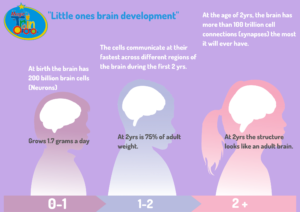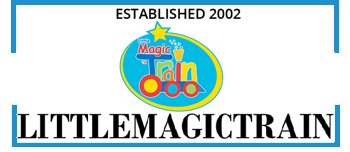Meeting Myelin
Did you know how much of a pivotal role Myelin plays in your child’s development?
What is Myelin?
Myelin is humble-looking insulation that very tightly wraps around the nerve fibres. This process increases signal strength, speed and accuracy. This incredible insulation is the broadband in our brain and every time we do something and practise it, we are upgrading the speed and precision of the broadband in our brain circuitry.
When you hear people talking about ‘muscle memory’ they are actually talking about Myelin and it has even been attributed as the key “to talking, reading learning skills and being human.”
Q: Why is targeted, mistake-focused practise so effective?
A: Because the best way to build a good circuit is to fire it, attend to the mistakes, then fire it again, over and over. Struggle is not an option: it’s a biological requirement.
Coyle, D, (2009); The Talent Code, page 34
If Myelin was part of a City or Town it would be the tarmac on our roads and pavement. That does seem a little boring and dull as to be honest have you ever stood in awe admiring concrete? I know I certainly don’t, but we really should be admiring and nurturing the Myelin in our own circuitry and helping develop it in our little ones.
Did you know?
Myelin initially builds on the sensorimotor white matter and the Heschl gyrus (the structure containing the human primary auditory cortex in the brain) then extends to the language-related areas.
The vital aspect of physical literacy in the Early Years is that it helps with speech and language and this is looked at in the ‘Myelination of language-related areas in the developing brain’ by J. Pujol, et al, 2006.
My light bulb moment with Myelin
When I created Littlemagictrain, in 2004, I was intrigued by the feedback from nurseries and preschools regarding the increased confidence of the children after a few sessions. For the first few years, I initially assumed this was due to the way make-believe, music and movement had been combined in one session to engage the children.
But then I read Daniel Coyle’s book ‘The Talent Code’ about the importance of Myelin in training dancers, athletes and musicians and he concludes that it’s not about practise but “good practise”.
Q: Why are passion and persistence key ingredients of talent?
A: Because wrapping Myelin around a big circuit requires immense energy and time. If you don’t love it, you’ll never work hard enough to be great.
Coyle, D, (2009); The Talent Code, page 34
“Good practise” is vital in early years as everything the children do, and learn, is creating all those amazing neural connections in the brain and Myelin working overtime to wrap around the nerve fibres. Myelin has been described as a fatty sausage that wraps around the nerve fibre. The best way to envisage Myelin is layers and layers of electrical tape that has been used to prevent any leaks.
When a neural pathway is made and fully Myelinated (covered in electrical tape), your brain doesn’t change the pathway or make amends it just rebuilds elsewhere. For example, if you have made a connection going from ‘A to B’ and you need to correct this mistake, your body has to create a totally new neural pathway and start again. Unfortunately, this means the brain has to find a new way of getting from ‘A’ to ‘B’ and to get there it may have to go via ‘W’. A lot of extra work!

‘Little ones brain development’ Littlemagictrain 2021
This simple graphic shows how hard the brain is working in the early years, growing connections and pathways and at the same time wrapping Myelin around all those pathways.
‘Meeting our hero Mr Myelin’
‘Daniel Coyle draws on research in his book ‘The Talent Code’ on the importance Myelin building. He reveals why some teaching methods are more effective and how important it is to train our brains in the right way. Coyle introduces you to Mr Myelin the man behind this research.
Mr Myelin is in fact Professor George Bartzokis (1956-2014), a neuroscientist and Professor of Psychiatry. Bartzokis originated the theory that the degeneration of the brain’s myelin contributed to many developmental and degenerative diseases, such as schizophrenia and Alzheimer’s. This research shows the importance of Myelin in the brain and how it ensures everything runs smoothly.
‘If you don’t use it you lose it!’
This phrase says it all, as the brain will prune away the bad neural pathway and the new pathway going from ‘A’ via ‘W’ to ‘B’ will stay. The brain is continually growing and pruning neural pathways. To help children learn we need to ensure the correct neural pathway is built so they don’t have to relearn, rebuild and prune. I always visualize a gardener attacking a rose, that has grown along a wall in the wrong direction. The gardener has to prune the poor rose which then has to find the energy and make the effort to grow all over again in the right direction.
‘Something to think about’
Q: “Why can’t monkey’s – which have every neuron type and neurotransmitter we have – use language the way we do?”
A: “because we’ve got 20% more myelin. To talk like we are now takes a lot of information -processing speed, and they have no broadband.
Q: “Why can horses walk immediately on being born while humans take a year?”
A: “A horse is born with its brain fully myelinated, online, and ready to go.
Coyle, D, (2009); The Talent Code (p 67-68)

Some Handy Myelin building rules
Daniel Coyle came up with these 3 rules in his book on how to grow Myelin.
RULE 1:
CHUNK IT UP
- bite-sized
MODELLING
- demonstrate correctly
SLOW IT DOWN
- going slowly allows you to correct errors to create a higher degree of precision. When it comes to growing myelin – precision is everything.
RULE 2:
REPEAT IT
- There is no substitute for attentive repetition of the skill you want to build – remember quality not quantity.
RULE 3:
FEEL IT
- Coyle gave the example of violinists. If they hear an out of tune string, it should bother them. It should bother them a lot. That’s what they need to feel. This feeling means they are concentrating and when you are really practising you are concentrating and an out of tune string would really annoy you.
Littlemagictrain and Myelin
Reading Daniel Coyle’s book helped me make sense of my own vocational ballet training and perfecting movements to build Myelin and the how and why of teaching. On reflection, I can see that without realizing it, I had been following the rules of Myelin building in the sessions.
It is so important that we help children build the correct pathways. To ensure this process is fun and the children are fully engaged and included I have always used the fun of make-believe, music and movement and this is the foundation and passion of Littlemagictrain.

In a nutshell
Littlemagictrain helps with Myelin building as we develop the story and actions over a number of weeks. The sessions allow you to:
- Chunk it up (small bites)
movement skills and vocabulary are developed in small bite sized chunks.
- Model correctly
correct modelling from the grown-ups to help with learning
- Slow it down
the speed of your actions/development will depend on your little ones needs.
- Repeat it
the sessions allow for repetition with the fun of what next?
So many different learning opportunities to be had through fun. For more information on the sessions and how they will benefit your little ones visit www.littlemagictrain.com

References:
Coyle, D., 2010. The Talent Code. Crawley: Arrow Books (ISBN 9780099519850)
Pujol. J, Sorian-Mas. C, Ortiz. H, Sebastian Galles. N, Losilla. J.M. & Deus.J., 2006. Myelination of language-related areas in the developing brain’. March 2006. Neurology 66 (3): 339-43; PubMed.
